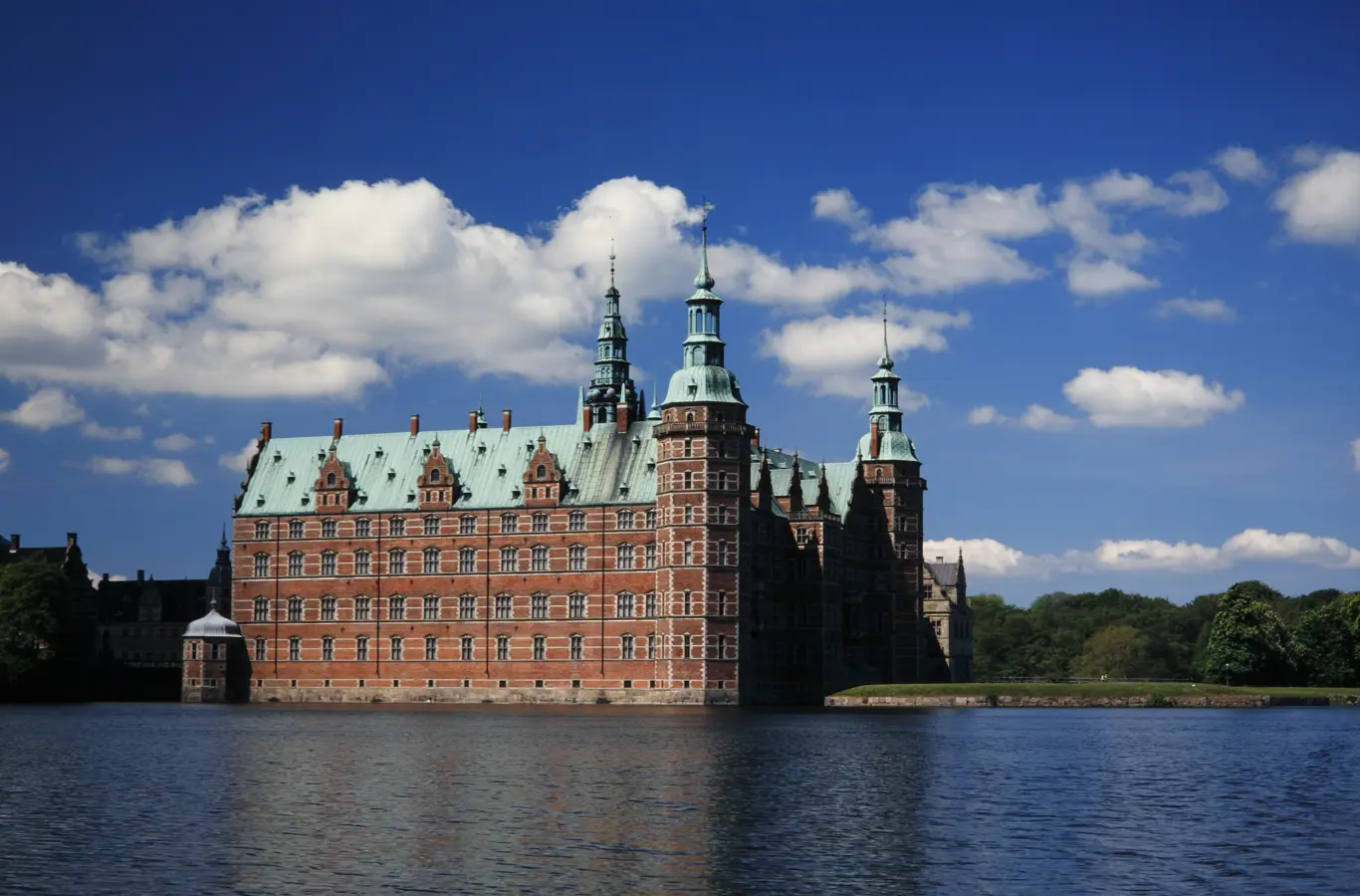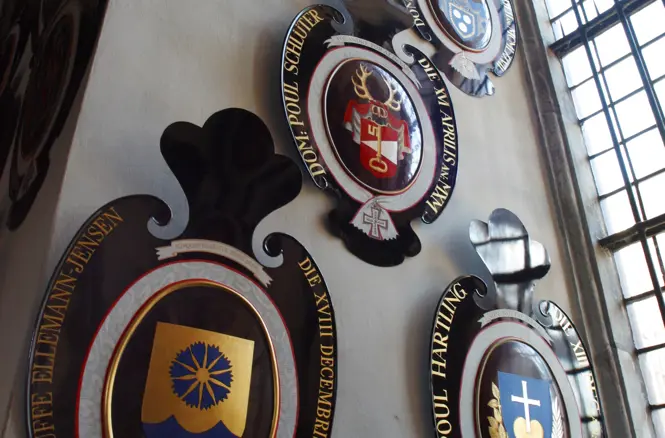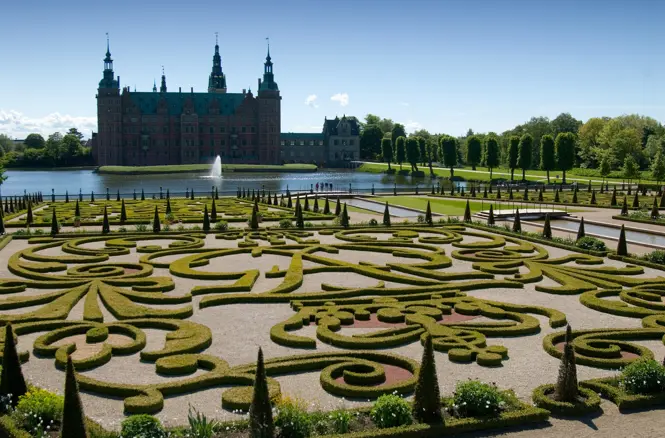
Frederiksborg Palace is, today, The National History Museum. Particularly associated with the Royal House are the palace’s Chapel of the Orders and the Bath House.
The Chapel of the Orders
Frederiksborg Palace Chapel has retained a special connection with the Royal House. With the exception of Christian VII, the absolute monarchs were anointed in the chapel. With the introduction of absolutism, the anointment ritual replaced coronation as the inauguration ceremony for the new monarch. Christian V was the first king to be anointed, and he established the Chapel of the Orders, where shields depicting the coats-of-arms of knights were hung. Today, Frederiksborg Palace Chapel is an ordinary parish church and museum.
The Bath House
From Frederik II’s original Frederiksborg Palace, the little Bath House remains to this day. It was built in 1580, and the richly-decorated sandstone portal with fluted, Ionic columns and with lion masks on the pedestals and column shafts still bears Frederik II’s motto: "Mein Hoffnung zu Gott allein".
As the name indicates, the building was meant to serve as a bathroom, and the ground floor was fitted with a tin-lined room for that purpose. It existed until 1794, when the tin was removed and sold. The building was also used as a small pleasure pavilion equipped with a kitchen and several bedrooms. The Bath House’s interior was refurbished by Frederik VII in 1858. The main room in the Bath House is the dining room in the centre of the building on the first floor. In the dining room, the sculptor A.M. Jahn created one of his entertaining stucco ceilings with a myriad of different animals.


